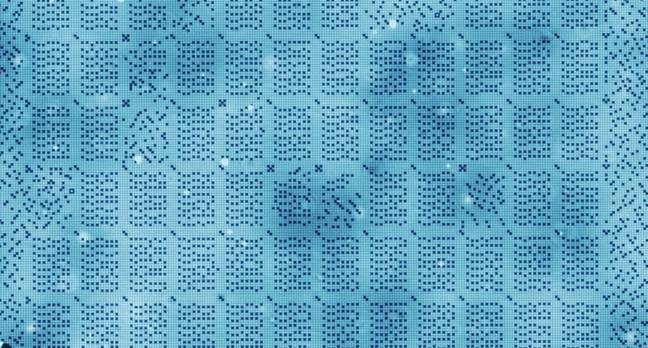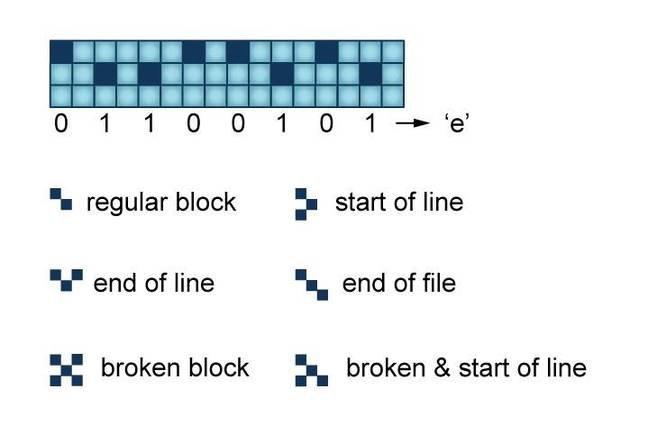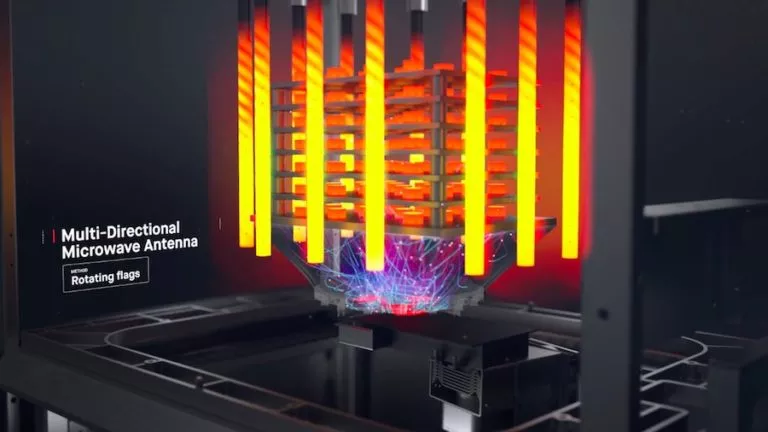Scientists Create Atom-sized Storage That Stores 500TB Data In 1 Sqaure Inch

 Short Bytes: Scientists at the Delft University of Technology have published a research paper on Atomic memory in the Nature science journal. The nanotechnology successfully demonstrates the storage of 1 kilobyte of data in a chlorine atom grid. This creates a super-sized hard drive capable of storing 500 terabytes of data per square inch.
Short Bytes: Scientists at the Delft University of Technology have published a research paper on Atomic memory in the Nature science journal. The nanotechnology successfully demonstrates the storage of 1 kilobyte of data in a chlorine atom grid. This creates a super-sized hard drive capable of storing 500 terabytes of data per square inch.
Half a century ago, the rotating type disks were gaining popularity and then came the SSDs, promising to be faster but not cheaper at the current moment. The quest for fabrication even higher capacity storage solutions has inclined the scientists to propel the creation of atomic storage.
Stuffing data at the atomic level seems to be aiming at a vulture’s eye from the ground, but this hard to digest thing has already come into existence.
A few years back, IBM created a breakthrough nanotech in which they managed to store a bit of information in around 12 atoms. A new research conducted by the Delft University of Technology in Netherlands has taken the nano-tech storage development to a whole new paradigm of success. It involves zooming up to the atomic arrangement of Copper Chloride (CuCl2) in order to store the data.
The storage creation process begins with placing copper chloride powder on a copper surface followed by heating it at 300-degree celsius until the powder evaporates, leading to the formation of a layer of chlorine atoms arranged as a grid-like structure above the copper surface.
The imperfect 8 by 8 atom grid formed so contains gaps (vacancies) between the atoms. These gaps are, in fact, important to the existence of the atom-based storage. The gaps to the left and the right of the chlorine atom are interpreted as 0 and 1 binary number by a scanning tunneling microscope (STM).
Also Read: Microsoft Working On DNA Storage — 1,000,000,000 TB Data In 1 Gram DNA
To perform the write operation, the pointer tip attached of the STM moves the atoms to the vacancies, thereby, creating vacancies at the original position. Each atom shift contributes to 1 bit of data stored. The 8 by 8 grid is used to write a letter and multiple grids are used to form a sentence. The scientists have demonstrated their experimental setup for storing 1 kilobyte of data which is made up of 8000 individual bits. The shifted atoms can be moved back to their original position. Thus, the data can be rewritten as many numbers of times.

For the read operation, the physical contact of the STM pointer and the atom is not required. Hovering the pointer above the chlorine layer will allow the STM to sense whether an atom or a vacancy is present below the pointer.
Now, consider the STM as a driver who wants to traverse in the large puzzle of atoms. What would he do? To avoided the situation of confusion for the STM, the researchers have also devised a set of traffic signs which would help the driver to follow the correct road. Basically, these are different types markers placed on the top left corner of the atom grid. These makers guide the STM about where to start and the read/write operation, where a broken line or block exists, etc.
All this stuff ultimately creates a gigantic storage house in which data could stuff with a density of 500 terabytes per square inch, 502 terabytes to be precise. This amazing future tech, though in the development phase, seems to be the one-stop solution for our storage needs. But even the greatest technologies have their downsides. And for this, the stability of data is a major issue. The hard drive needs to be kept at -196 degrees so that the data in it doesn’t evaporate.
The atomic memory research has been published in the Nature science journal.
Do you have something to add? Tell us in the comments below.





![Here's How You Can Change Your Twitch Username [2022]](https://fossbytes.com/wp-content/uploads/2022/02/Heres-How-You-Can-Change-Your-Twitch-Username-2022-768x432.png)
